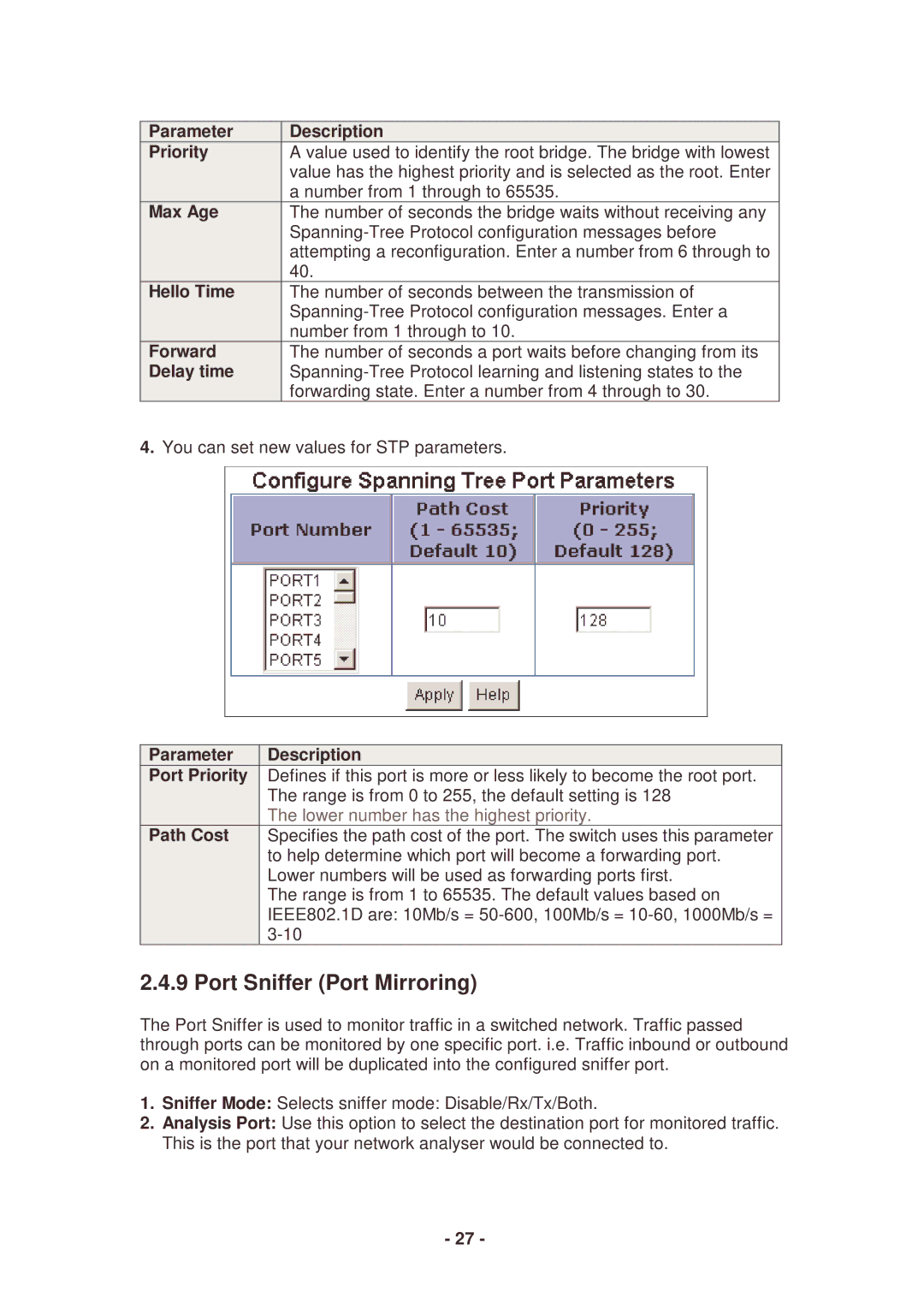
Parameter | Description |
Priority | A value used to identify the root bridge. The bridge with lowest |
| value has the highest priority and is selected as the root. Enter |
| a number from 1 through to 65535. |
Max Age | The number of seconds the bridge waits without receiving any |
| |
| attempting a reconfiguration. Enter a number from 6 through to |
| 40. |
Hello Time | The number of seconds between the transmission of |
| |
| number from 1 through to 10. |
Forward | The number of seconds a port waits before changing from its |
Delay time | |
| forwarding state. Enter a number from 4 through to 30. |
4.You can set new values for STP parameters.
Parameter | Description |
Port Priority | Defines if this port is more or less likely to become the root port. |
| The range is from 0 to 255, the default setting is 128 |
| The lower number has the highest priority. |
Path Cost | Specifies the path cost of the port. The switch uses this parameter |
| to help determine which port will become a forwarding port. |
| Lower numbers will be used as forwarding ports first. |
| The range is from 1 to 65535. The default values based on |
| IEEE802.1D are: 10Mb/s = |
|
2.4.9 Port Sniffer (Port Mirroring)
The Port Sniffer is used to monitor traffic in a switched network. Traffic passed through ports can be monitored by one specific port. i.e. Traffic inbound or outbound on a monitored port will be duplicated into the configured sniffer port.
1.Sniffer Mode: Selects sniffer mode: Disable/Rx/Tx/Both.
2.Analysis Port: Use this option to select the destination port for monitored traffic. This is the port that your network analyser would be connected to.
-27 -
